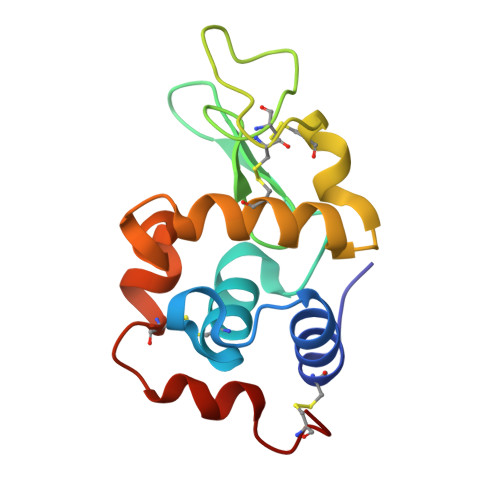Room-temperature serial crystallography at synchrotron X-ray sources using slowly flowing free-standing high-viscosity microstreams.
Botha, S., Nass, K., Barends, T.R., Kabsch, W., Latz, B., Dworkowski, F., Foucar, L., Panepucci, E., Wang, M., Shoeman, R.L., Schlichting, I., Doak, R.B.(2015) Acta Crystallogr D Biol Crystallogr 71: 387-397
- PubMed: 25664750
- DOI: https://doi.org/10.1107/S1399004714026327
- Primary Citation of Related Structures:
4RLM, 4RLN - PubMed Abstract:
Recent advances in synchrotron sources, beamline optics and detectors are driving a renaissance in room-temperature data collection. The underlying impetus is the recognition that conformational differences are observed in functionally important regions of structures determined using crystals kept at ambient as opposed to cryogenic temperature during data collection. In addition, room-temperature measurements enable time-resolved studies and eliminate the need to find suitable cryoprotectants. Since radiation damage limits the high-resolution data that can be obtained from a single crystal, especially at room temperature, data are typically collected in a serial fashion using a number of crystals to spread the total dose over the entire ensemble. Several approaches have been developed over the years to efficiently exchange crystals for room-temperature data collection. These include in situ collection in trays, chips and capillary mounts. Here, the use of a slowly flowing microscopic stream for crystal delivery is demonstrated, resulting in extremely high-throughput delivery of crystals into the X-ray beam. This free-stream technology, which was originally developed for serial femtosecond crystallography at X-ray free-electron lasers, is here adapted to serial crystallography at synchrotrons. By embedding the crystals in a high-viscosity carrier stream, high-resolution room-temperature studies can be conducted at atmospheric pressure using the unattenuated X-ray beam, thus permitting the analysis of small or weakly scattering crystals. The high-viscosity extrusion injector is described, as is its use to collect high-resolution serial data from native and heavy-atom-derivatized lysozyme crystals at the Swiss Light Source using less than half a milligram of protein crystals. The room-temperature serial data allow de novo structure determination. The crystal size used in this proof-of-principle experiment was dictated by the available flux density. However, upcoming developments in beamline optics, detectors and synchrotron sources will enable the use of true microcrystals. This high-throughput, high-dose-rate methodology provides a new route to investigating the structure and dynamics of macromolecules at ambient temperature.
Organizational Affiliation:
Department of Biomolecular Mechanisms, Max Planck Institute for Medical Research, Jahnstrasse 29, 69120 Heidelberg, Germany.
















